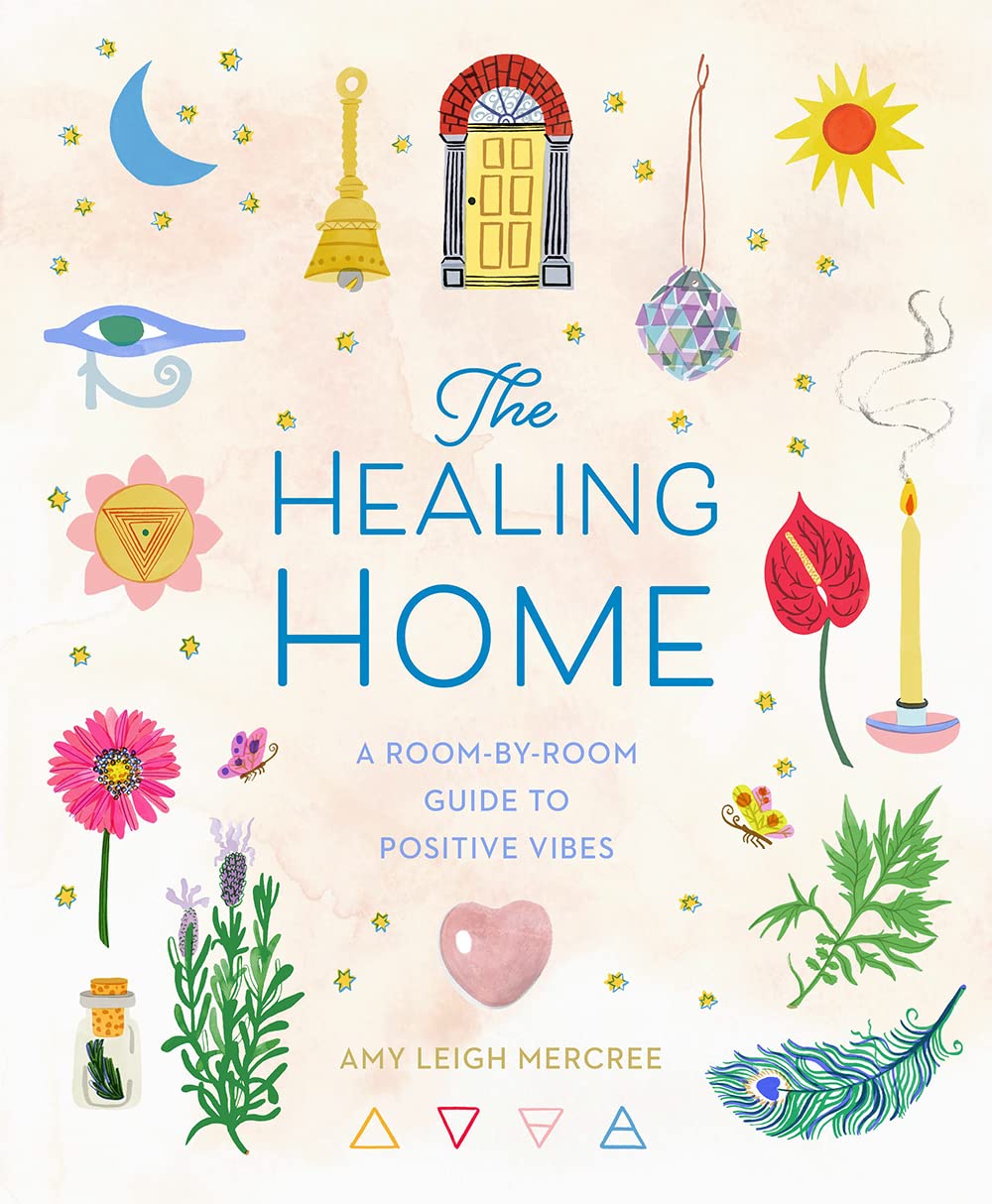Steps to a Peaceful,Relaxing and Healthy Home ;Your home should be a sanctuary—a place where you can unwind, feel safe, and restore your energy. A peaceful, relaxing, and healthy home can improve your mental and physical well-being, helping to reduce stress and promote better sleep. In this guide, we’ll explore 15 practical steps to transform your home into a calming retreat, ensuring that every corner contributes to a more tranquil and rejuvenating atmosphere.
1. Declutter and Organize Your Space
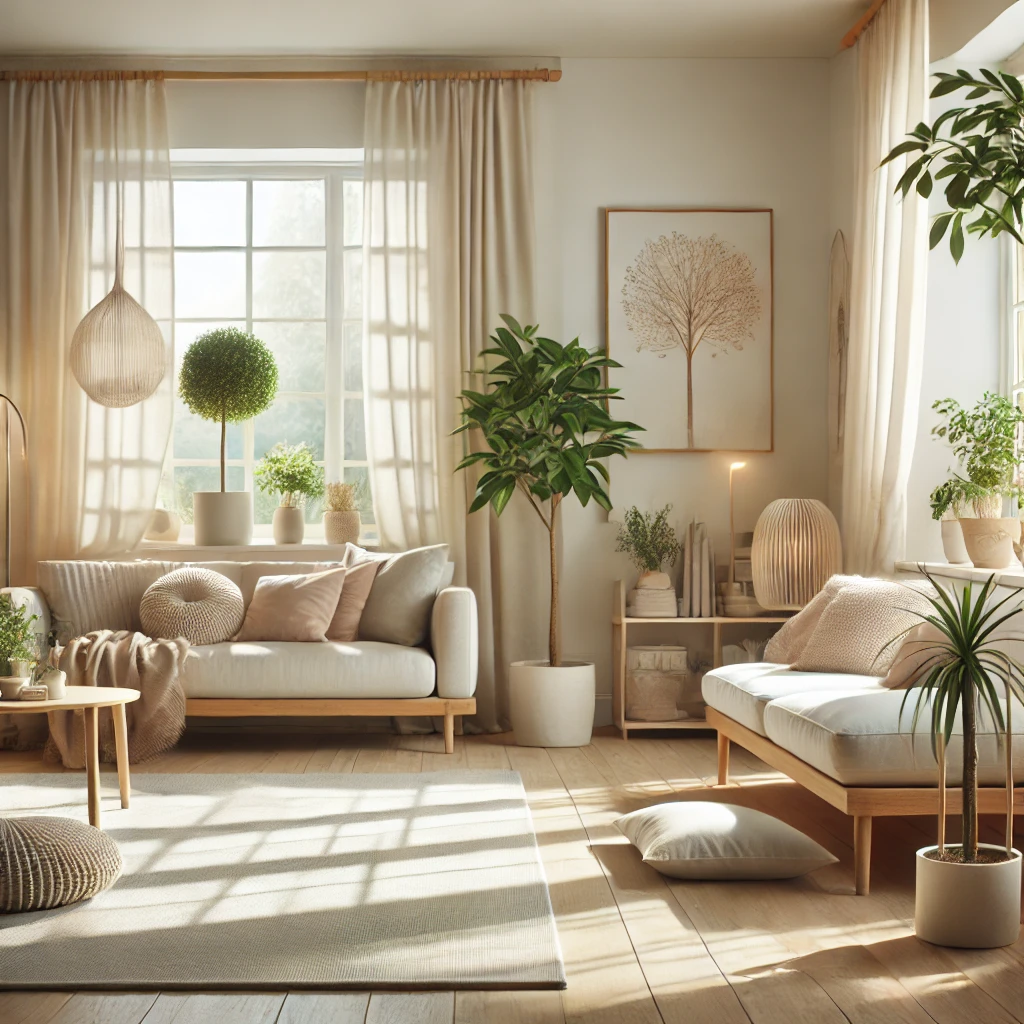
A cluttered home often leads to a cluttered mind. Studies show that excessive mess can increase stress levels, making it harder to relax and focus. By decluttering your space, you create an environment that fosters calmness and productivity.
Start by tackling one room at a time, sorting items into categories: keep, donate, and discard. The key is to be intentional about what you keep—hold on to only what adds value to your life. Organizational tools like storage bins, shelves, and drawer dividers can help maintain order.
Once you’ve decluttered, implement a daily habit of tidying up to prevent things from piling up again. Make it a rule to put things back in their designated places after use. A clean and organized space not only looks appealing but also makes your home feel lighter and more peaceful.
2. Incorporate Natural Elements
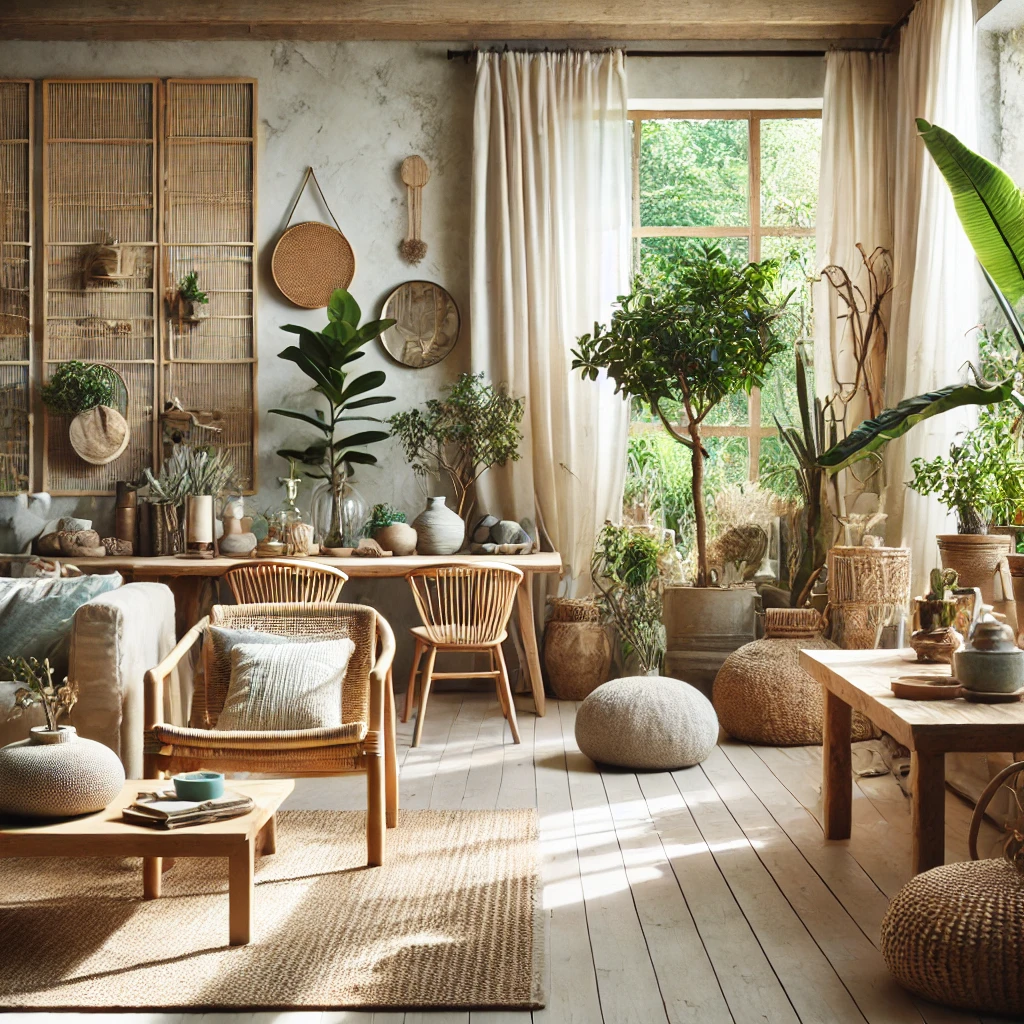
Bringing nature indoors can significantly enhance your home’s atmosphere. Houseplants not only add aesthetic appeal but also purify the air, improve mood, and reduce stress. Popular options like peace lilies, snake plants, and pothos are easy to care for and thrive in most indoor settings.
Natural materials such as wood, bamboo, and stone can also contribute to a relaxing environment. Consider wooden furniture, stone countertops, or rattan decor pieces to add warmth and an organic touch to your home. These elements create a connection to nature, making your space feel more grounded and serene.
Additionally, incorporating natural textiles like cotton, linen, and wool in your furniture and bedding can increase comfort. Choosing eco-friendly and sustainable materials not only benefits your health but also contributes to a more harmonious living space.
3. Improve Indoor Air Quality

Poor indoor air quality can lead to allergies, respiratory issues, and overall discomfort. Keeping your home well-ventilated by opening windows daily helps to remove stale air and bring in fresh oxygen. Investing in an air purifier can further enhance air quality, especially if you live in an area with pollution or allergens.
Houseplants like aloe vera, spider plants, and ferns are natural air purifiers. They absorb toxins and release oxygen, making them a great addition to any room. Essential oils such as eucalyptus and lavender can also help freshen the air while promoting relaxation.
Regular cleaning also plays a role in maintaining healthy air quality. Dusting surfaces, vacuuming with a HEPA filter, and reducing the use of harsh chemical cleaners can minimize pollutants. Opting for natural cleaning solutions like vinegar, baking soda, and lemon ensures a toxin-free environment.
4. Choose Soothing Colors for Your Home

Colors have a psychological impact on emotions and overall well-being. Soft, neutral tones such as whites, beiges, and pastels can make a space feel calm and open. Blue and green hues are especially known for their soothing properties, making them ideal for bedrooms and relaxation spaces.
If you prefer bolder colors, opt for earthy shades like terracotta, soft grays, or muted blues. These colors create a cozy and inviting ambiance without overwhelming the senses. Avoid overly bright or neon colors in main living spaces, as they can be overly stimulating.
Incorporating soothing colors doesn’t mean repainting your entire home. Adding decor elements like throw pillows, curtains, and artwork in calming tones can subtly transform the atmosphere. A well-balanced color palette ensures your home feels like a peaceful retreat.
5. Optimize Natural and Soft Lighting
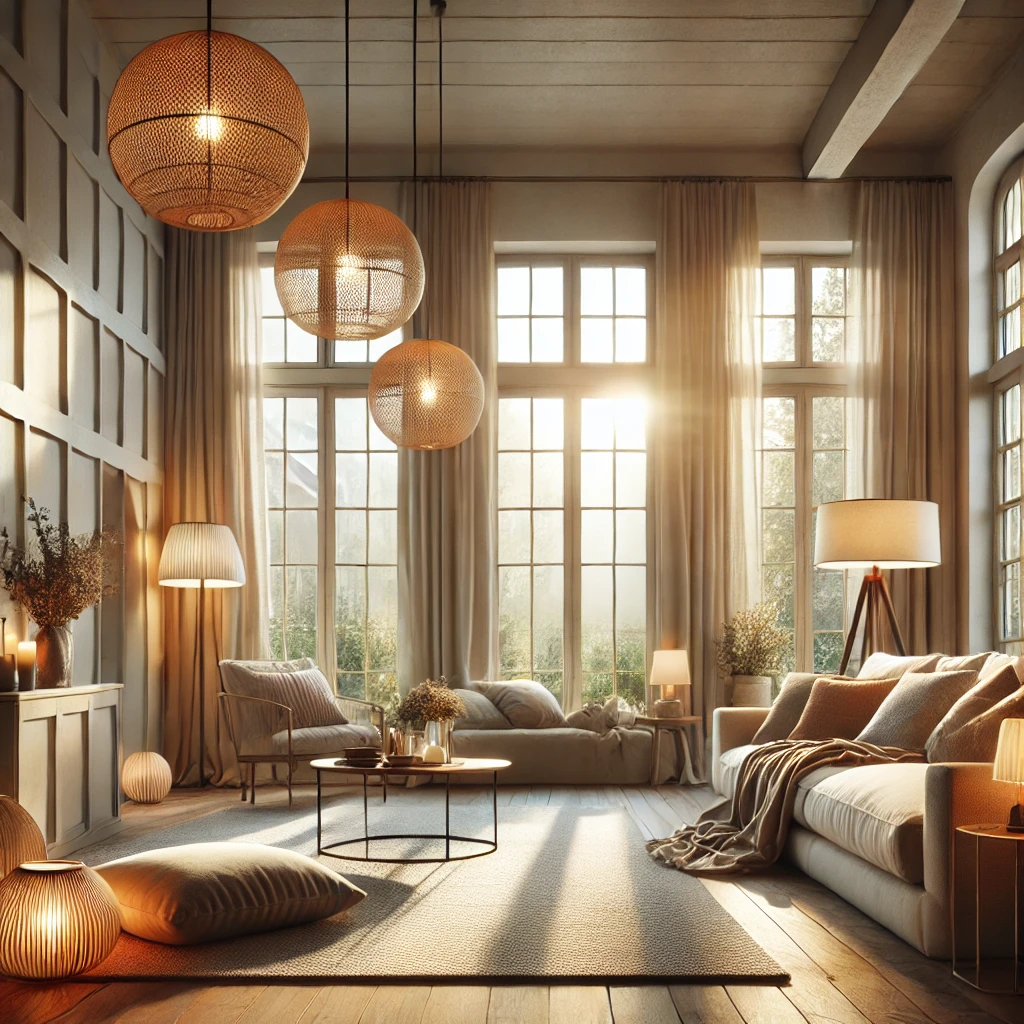
Lighting plays a crucial role in setting the mood of a home. Natural light boosts mood, improves productivity, and enhances overall well-being. Keeping windows unobstructed and using sheer curtains allows more sunlight to filter in, brightening your space naturally.
For evening relaxation, soft lighting is essential. Warm-toned bulbs, dimmable lamps, and candles create a cozy ambiance perfect for winding down. Avoid harsh white lights, especially in bedrooms, as they can disrupt melatonin production and affect sleep quality.
Adding string lights, Himalayan salt lamps, or LED candles can further enhance the relaxing atmosphere. Layering different light sources—such as floor lamps, table lamps, and wall sconces—creates a balanced and inviting environment.
6. Create a Cozy and Comfortable Living Space
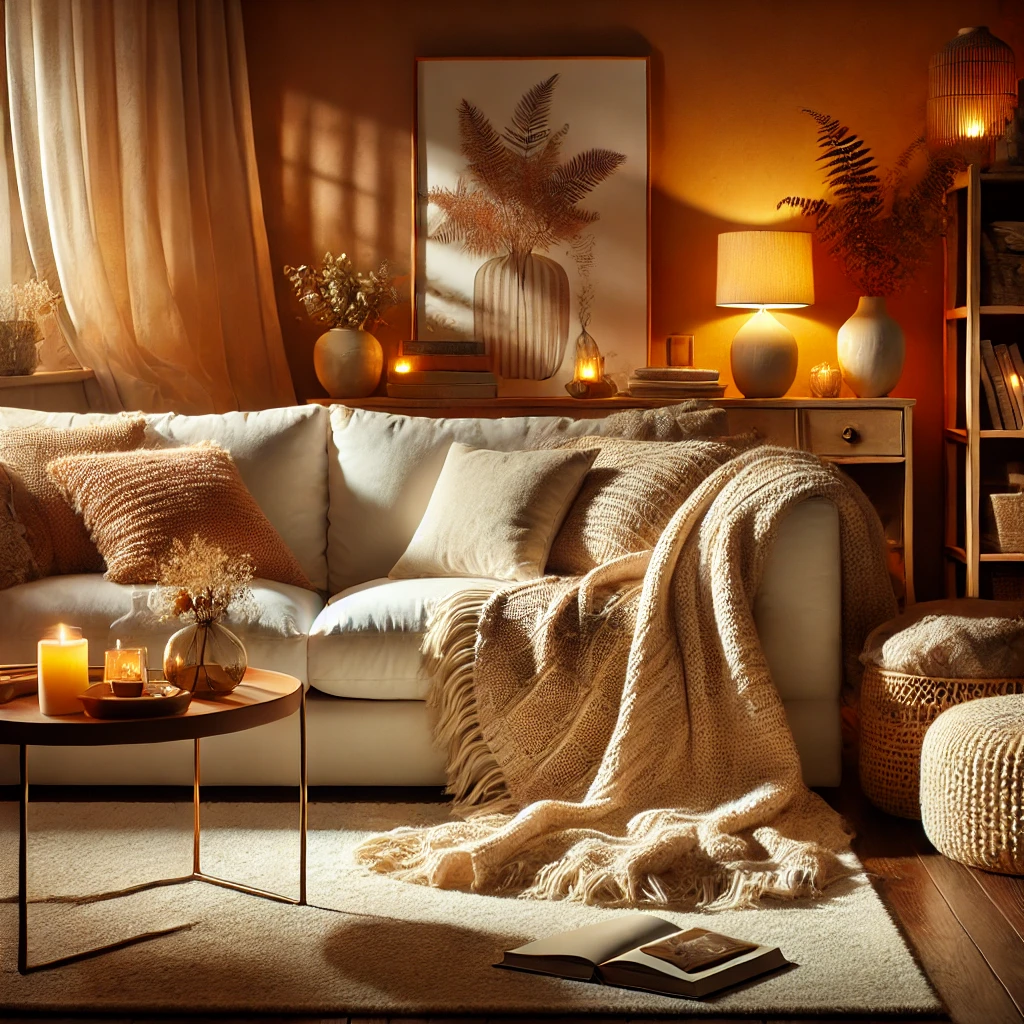
Your living space should be a place of comfort and relaxation. Soft textiles such as plush rugs, throw blankets, and oversized pillows can instantly make any room feel cozier. Choosing comfortable seating arrangements encourages relaxation and connection.
A cozy reading nook can be a great addition to your home. A small corner with a comfortable chair, warm lighting, and a bookshelf creates an inviting space for unwinding with a book. This personal retreat can serve as a quiet escape from daily stressors.
Incorporating layered textures like wool, velvet, and faux fur adds depth and warmth to your decor. By prioritizing comfort in your living space, you make your home feel more welcoming and nurturing.
7. Reduce Noise Pollution

Excessive noise can be a source of stress and anxiety. Soundproofing your home with rugs, heavy curtains, and upholstered furniture can help absorb unwanted noise. These additions not only reduce echo but also make your space feel more intimate.
White noise machines or nature soundscapes can be effective in masking external noise. Sounds like ocean waves, rainfall, or gentle instrumental music create a relaxing background that promotes focus and calmness. This is especially helpful in bedrooms and workspaces.
If possible, designate quiet zones in your home. Creating tech-free or low-noise areas allows for mindfulness and relaxation, free from distractions and interruptions.
8. Establish a Relaxing Bedroom Atmosphere
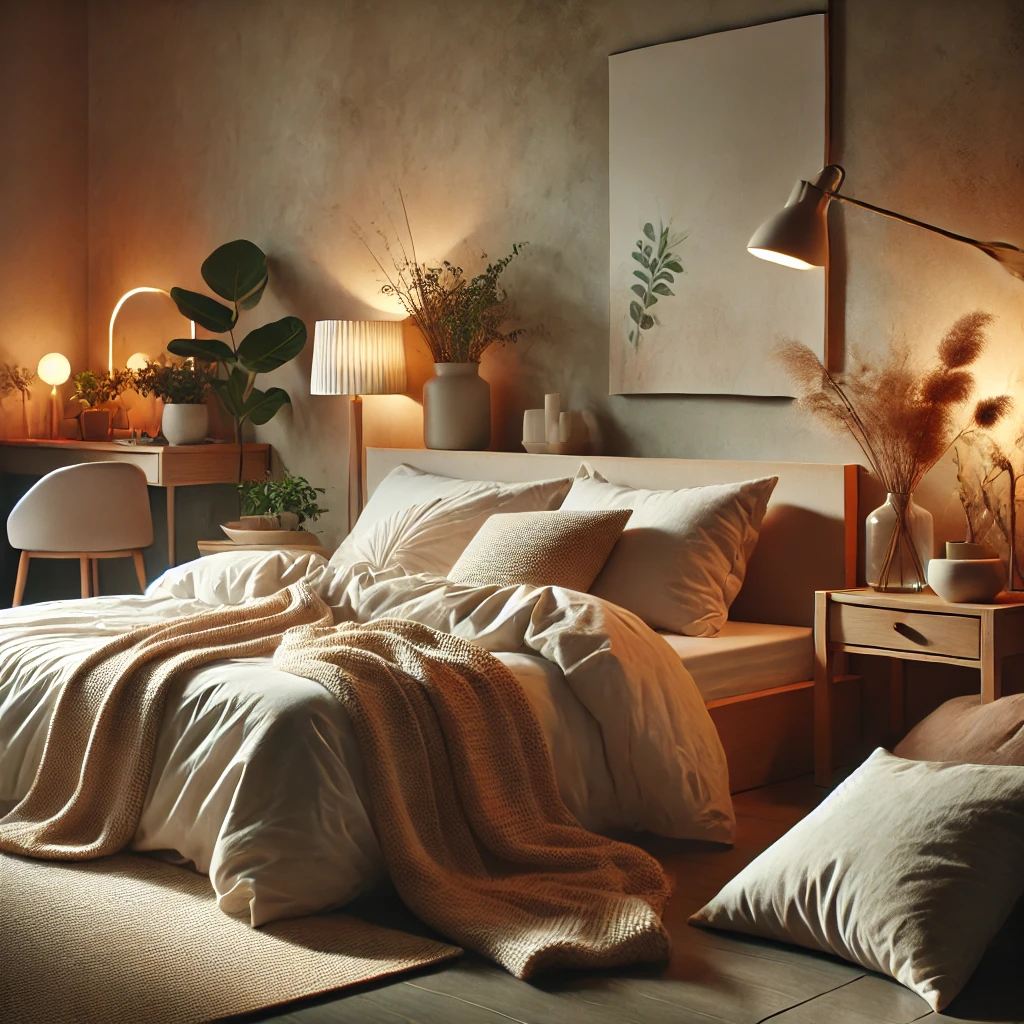
Your bedroom should be a retreat for rest and relaxation. Investing in high-quality bedding, such as breathable cotton or linen sheets and a supportive mattress, enhances sleep quality. Layering with soft blankets and plush pillows creates a cozy and inviting sleep environment.
Keeping electronics out of the bedroom can significantly improve relaxation. Blue light from screens disrupts melatonin production, making it harder to fall asleep. Instead, consider incorporating a bedtime routine that includes reading, meditation, or gentle stretching.
Aromatherapy can also contribute to a calming atmosphere. Using essential oils like lavender, chamomile, or sandalwood in a diffuser helps signal the body that it’s time to unwind. A serene bedroom promotes restful sleep, which is key to a healthier and more peaceful home.
9. Bring in Calming Scents with Aromatherapy
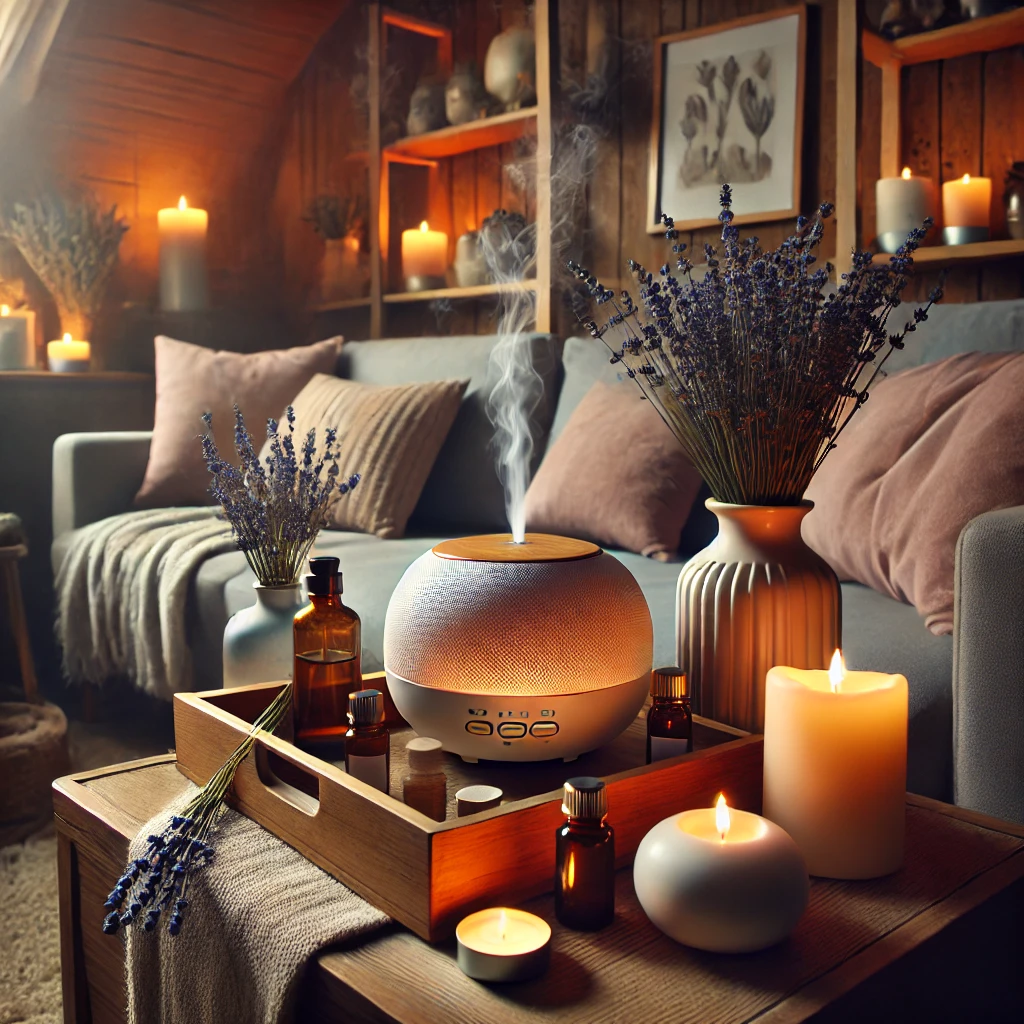
Scent has a powerful impact on emotions and overall well-being. Essential oils such as lavender, eucalyptus, and ylang-ylang can create a spa-like ambiance in your home. Diffusing these scents in different rooms promotes relaxation and reduces stress.
Candles and incense sticks are also great ways to incorporate soothing fragrances. Choosing natural, non-toxic options ensures that you’re not introducing harmful chemicals into your space. Scented soy or beeswax candles infused with essential oils provide a warm and comforting aroma.
For a more subtle effect, sachets of dried lavender or cedarwood can be placed in drawers and closets. Spritzing linens with a homemade linen spray made from essential oils can also enhance relaxation and contribute to a peaceful home environment.
10. Incorporate Mindfulness and Meditation Spaces
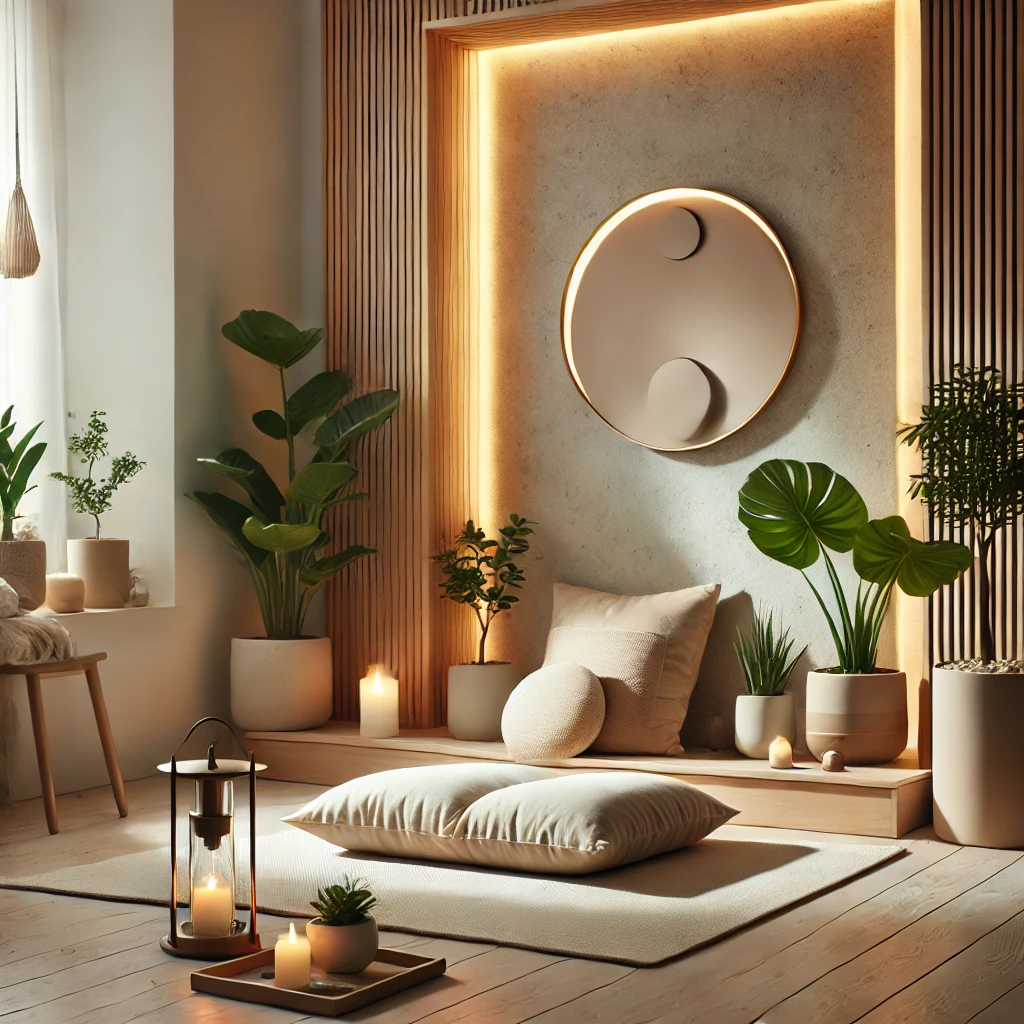
Having a dedicated space for mindfulness or meditation can be a game-changer in creating a peaceful home. This doesn’t have to be an entire room—just a small corner with a meditation cushion, soft lighting, and a calming plant can be enough.
Minimalist decor in this space helps keep distractions to a minimum. Opt for neutral colors, natural textures, and simple furnishings to create an environment conducive to relaxation. A cozy rug or yoga mat can also be useful for stretching or practicing deep breathing exercises.
Daily mindfulness practices, such as journaling, gratitude exercises, or guided meditation, can transform your mental state. By dedicating time to mindfulness, you reinforce a sense of tranquility and inner balance in your home.
11. Designate Tech-Free Zones for Digital Detox

Excessive screen time can lead to stress, eye strain, and disrupted sleep patterns. Designating certain areas of your home as tech-free zones encourages deeper relaxation and more meaningful interactions. A good place to start is the dining area and bedroom.
Creating a tech-free living room can encourage more face-to-face conversations, reading, or engaging in hobbies. Storage baskets for phones and devices can serve as a gentle reminder to disconnect. Dimming the lights and playing soft music can make these zones even more inviting.
Instead of relying on screens for entertainment, introduce activities like puzzles, board games, or creative projects. Prioritizing human connection and personal well-being over digital distractions fosters a healthier and more balanced home environment.
12. Use Feng Shui Principles for Positive Energy
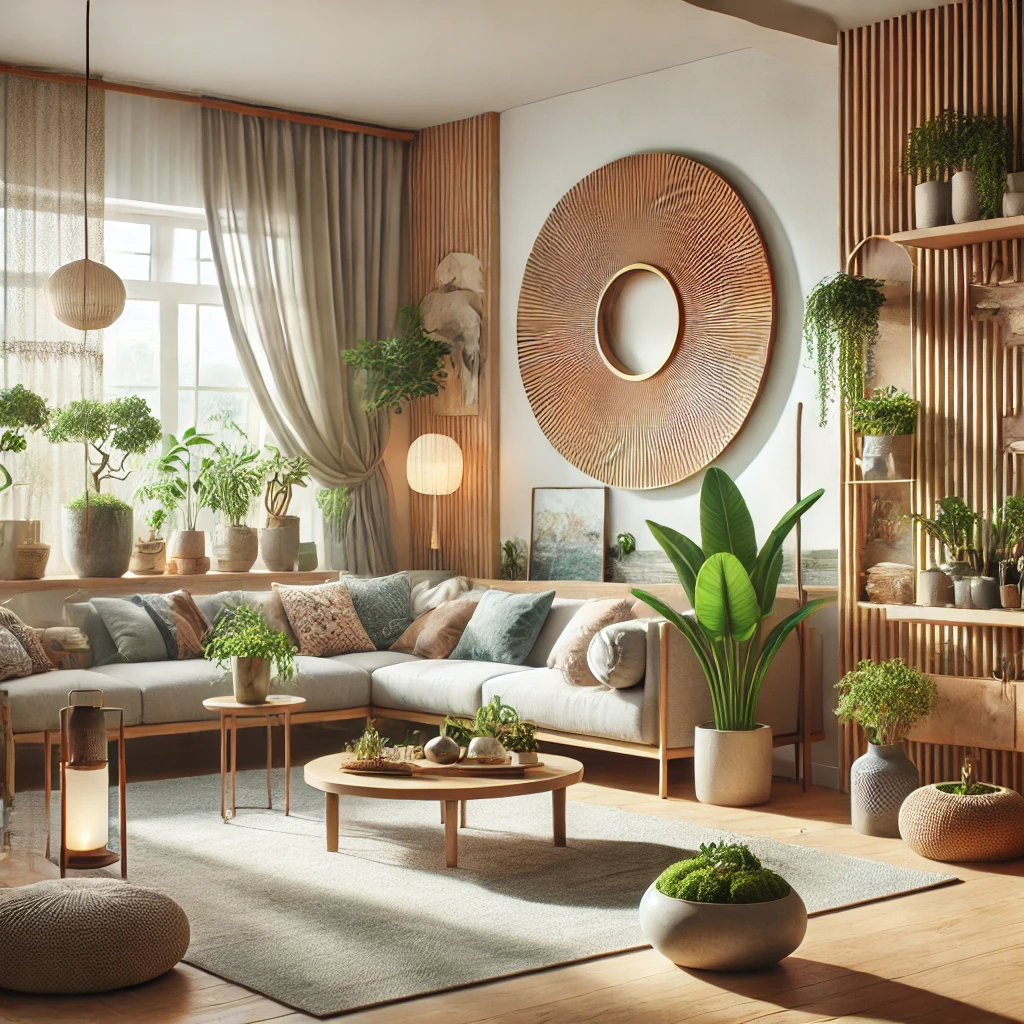
Feng Shui, an ancient Chinese practice, focuses on arranging your space to enhance the flow of positive energy. Simple adjustments, such as positioning furniture to create an open and inviting layout, can make your home feel more harmonious.
Decluttering doorways and walkways allows energy to flow freely, making your home feel more spacious. Mirrors placed strategically can enhance natural light and reflect positive energy. Avoid positioning your bed directly in line with the door, as it’s believed to disrupt restful sleep.
Incorporating elements like water (fountains), wood (plants or wooden furniture), and fire (candles) creates a balanced atmosphere. Even if you don’t strictly follow Feng Shui, its principles can inspire a more intentional and peaceful living space.
13. Personalize Your Home with Meaningful Decor

A home should reflect your personality and values. Surrounding yourself with meaningful decor—such as family photos, travel souvenirs, or handcrafted art—adds warmth and character to your space. These elements create a comforting environment that feels uniquely yours.
Opting for sentimental pieces rather than mass-produced decor enhances emotional connection. Handmade ceramics, vintage furniture, or heirloom textiles add depth and authenticity to your home. These items hold stories and contribute to a more personalized space.
Displaying affirmations, quotes, or vision boards can also reinforce a sense of motivation and positivity. Creating an environment that aligns with your dreams and aspirations makes your home a source of daily inspiration.
14. Incorporate Cozy Nooks for Relaxation
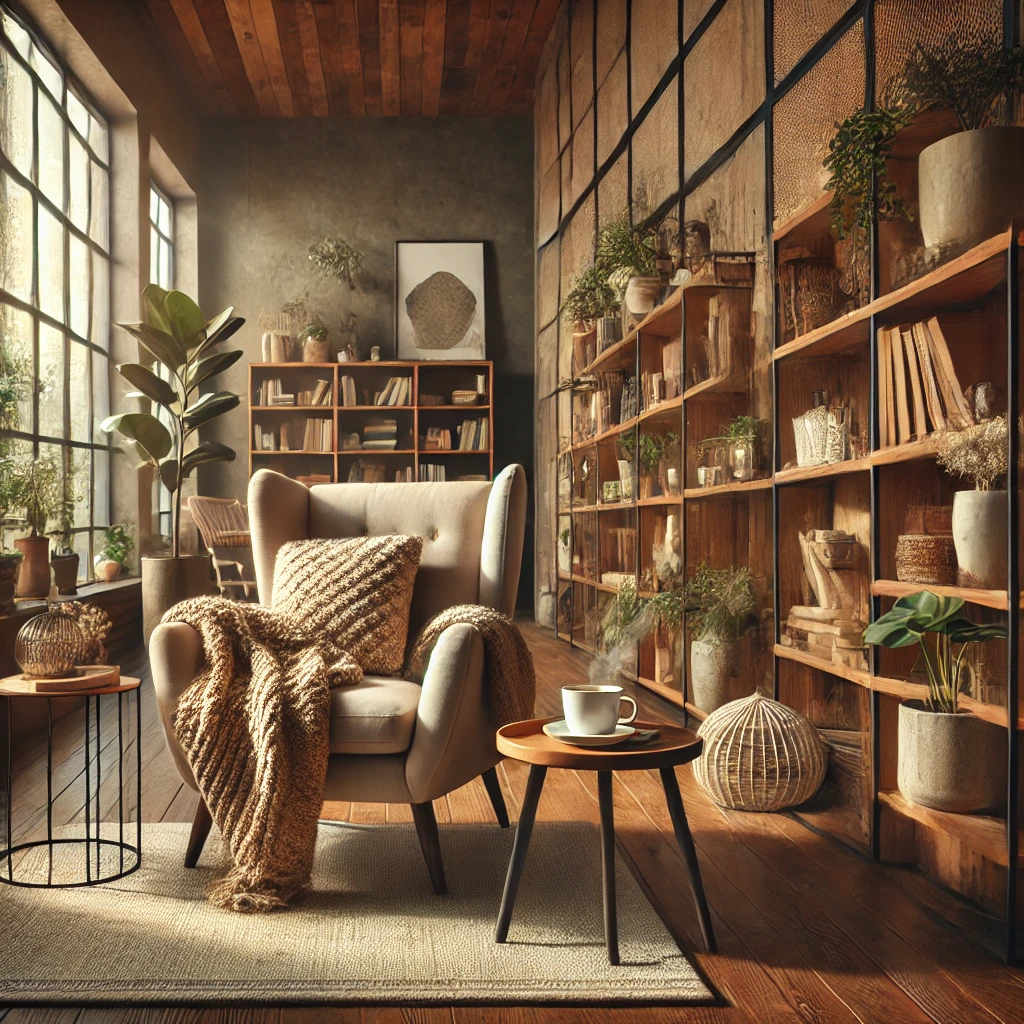
Designing cozy corners within your home allows you to escape from daily stress. Whether it’s a small reading nook, a window seat, or a hammock on the balcony, these spaces serve as little sanctuaries.
Layering these nooks with soft cushions, throws, and mood lighting makes them even more inviting. A comfortable armchair near a bookshelf, a small table for tea, or a sunlit corner with a view can transform how you unwind.
Encouraging quiet moments in these spaces—whether through reading, writing, or simply daydreaming—promotes relaxation. Having a designated spot where you can disconnect from responsibilities fosters balance and mental well-being.
15. Establish a Daily Routine for a Calm and Healthy Home
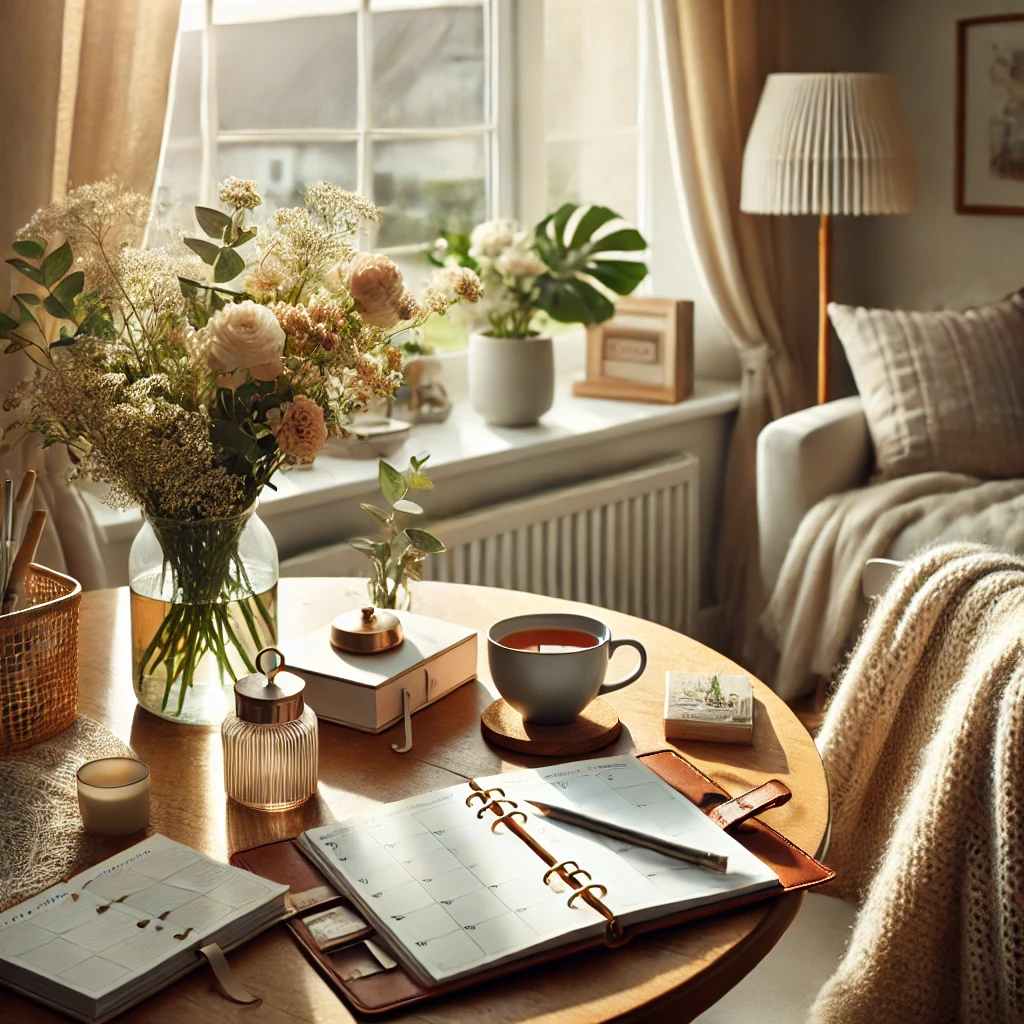
Consistency in daily habits contributes to a peaceful and organized home. Starting your mornings with mindfulness, gratitude, or a short meditation sets a positive tone for the day. A structured routine creates stability and reduces unnecessary stress.
Evening wind-down routines are equally important. Dimming lights, sipping herbal tea, or engaging in a relaxing activity signals your body that it’s time to unwind. A clutter-free nighttime environment further enhances relaxation and improves sleep quality.
Incorporating self-care rituals into your daily life—whether it’s a skincare routine, a short yoga session, or simply lighting a candle—makes your home feel nurturing. Small, intentional actions repeated daily contribute to a harmonious and fulfilling living space.
Conclusion
Transforming your home into a peaceful, relaxing, and healthy sanctuary doesn’t require drastic changes. By making small, mindful adjustments—such as decluttering, incorporating natural elements, optimizing lighting, and establishing a daily routine—you can create a space that promotes well-being and tranquility.
The key is to prioritize comfort, balance, and personal connection to your space. Whether it’s adding cozy corners, embracing aromatherapy, or integrating Feng Shui principles, each step brings you closer to a home that truly feels like a retreat.
Take the time to implement these changes gradually, and soon, your home will become a place of restoration, joy, and peace. Which of these steps are you most excited to try first? Let me know in the comments! 😊✨🏡

